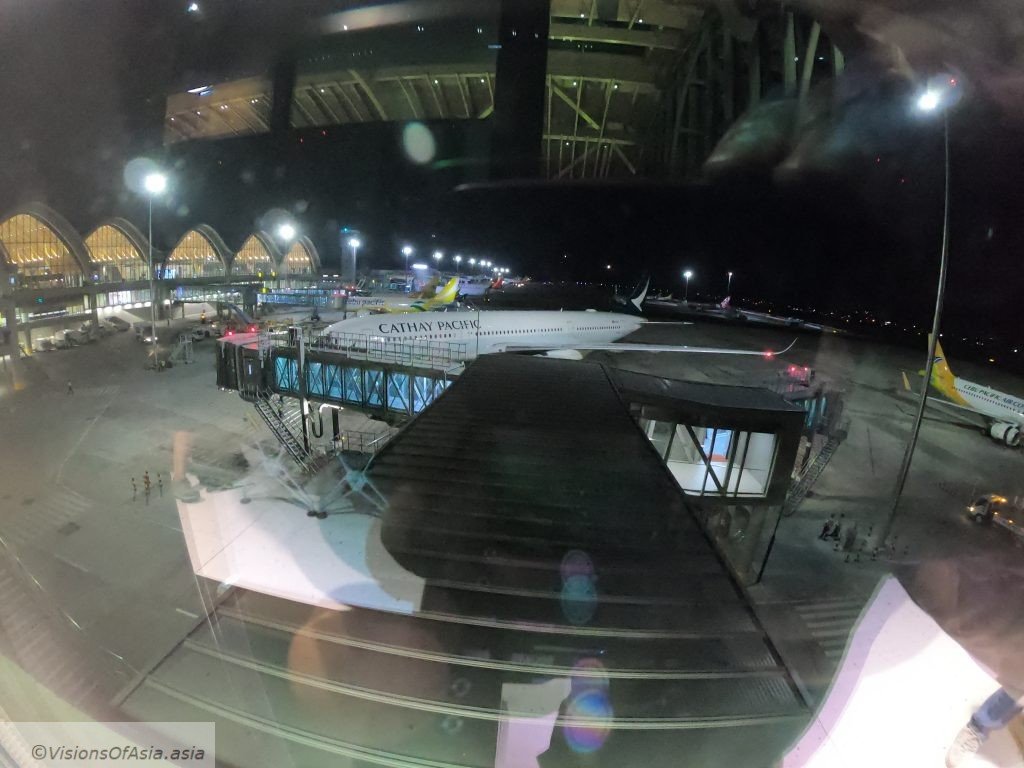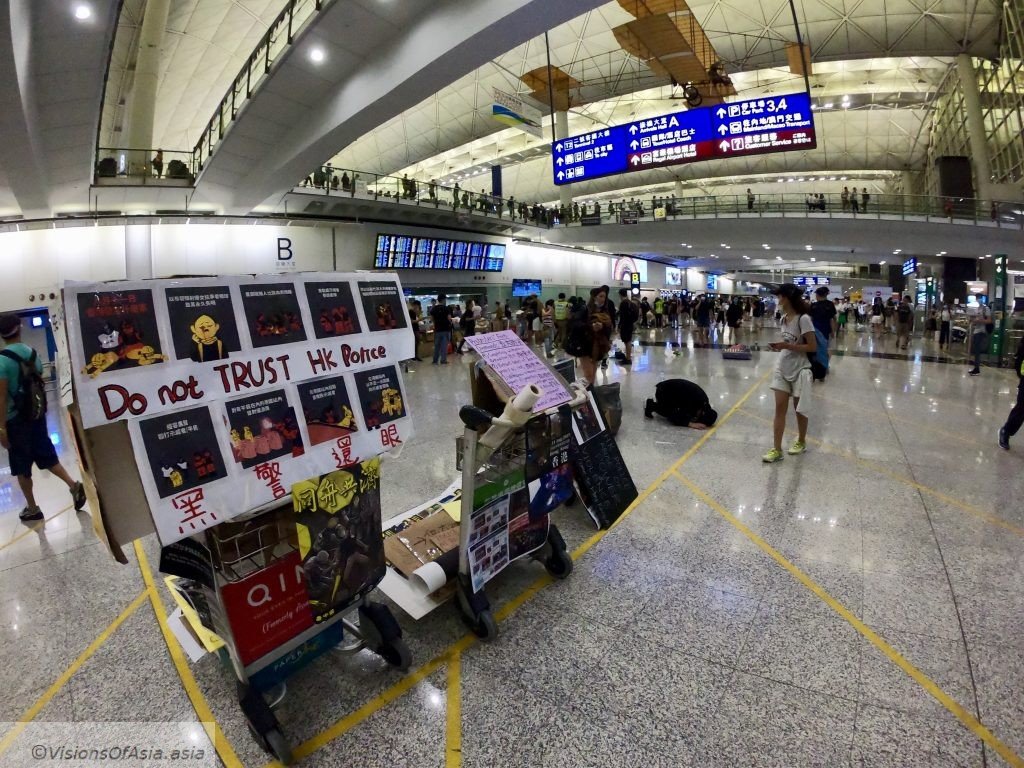Although I live in Hong Kong, somehow I never got personally affected by the protests (except when I went to cover them). This time however, the blockage of all the operations on 12th August at the HK airport got me stranded abroad in Cebu.
A sudden decision
While everyone was aware of the trouble the protests were creating at the airport, it came as a surprise when the Civil aviation authority of Hong Kong decided to cancel all outgoing flights for the remainder of the day. Happening as a bolt of lightning, this sudden decision created a major logistic nightmare for airlines and passengers alike.
Hong Kong is a major transportation hub in Asia, as many Chinese use the cities’ modern airport to transit on their way to Europe or America. As a consequence, disruption reached its peak, affecting also inbound passengers (even though normally they were allowed to land). I was scheduled to fly at 8 pm with Cathay Pacific, the flagship airline of Hong Kong.
Communication breakdown
The ground staff of Cathay who were handling operations in Cebu were caught completely unaware. I told a lady named Elizabeth about this cancellation, but she maintained that she heard no news from HK. After briefly shutting down the check-in counters, the Cathay staff reopened them, and started checking in the passengers. The reason for this was that the incoming plane, CX925 (bound to be CX926 on the return) was loaded and authorized to take off in Hong Kong.
We learned later, from a passenger who had insider information, that apparently Cathay did not have a backup crew to fly the plane back to HKG.
However, the plane was late, and landed in Cebu only at around 19.46. And it was only at 20.19 that the passengers were informed about the cancellation. There was a bit of a mess when getting out of immigration, attributable more to Filipino disorganization than to Cathay.

Cathay Pacific fail
The bad news was that Cathay Pacific, far from manning up to the consequences of the decisions of its home airport, decided to leave the passengers stranded abroad to their own devices. The ground staff told us that, as it was a government decision, the airline would cover nothing at all. All the passengers had to find accommodation at their own expense, some with young age children.
While legally, the airline was probably in its right and it did provide us flights on the next available plane, commercially, the attitude was rather questionable. Leaving passengers stranded abroad in a crisis never reflects positively on an airline, particularly at a time where it is facing a real political crisis of its own, caught between protesters and China’s blindly nationalistic population.
As I close this post, a Chinese state TV announced that the British CEO of Cathay had resigned, allegedly to take responsibility for the fallout in China.
Arriving in an airport under siege
It was a relief on Tuesday to finally arrive to the airport in a gorgeous sunset, and finally, with no news of cancellation.

The relief was even greater to see the plane docked in Cebu. Finally, I was able to climb onboard, although earlier, the authorities had once again interrupted the check-in operations at the HK airport as the protesters had blocked every access to the immigration lanes.

When I arrived at the airport, I started a periscope broadcast, to provide people a live impression of the airport, as the number of protesters had already dwindled.
Many posters asked to free Hong Kong from Chinese colonization, a reference to the one-way permits which allows up to 150 mainlanders per day to establish themselves in the city, thus deepening the mainland influence.
Other posters were defiant with regards to the Hong Kong police. On the upper level (departures), protesters were barricading themselves, while a faint taste of pepper spray permeated the atmosphere.

A deepening crisis
As we reach the 11th week of protests in Hong Kong, the crisis gives no sign of lowering in intensity. Protesters did show an ugly side of themselves when they beat up two persons they believed to be undercover policemen (it was later revealed that one was a “journalist” of a propaganda organ of China, the Global Times). Protesters apologized for their actions, the day after. As a reminder, paranoia is rife among the unorganized group of protesters.
At the same time, China has been exciting its population against Hong Kong, by covering in extenso the disorder caused by the protests. To understand this, it must be known that the Communist Party sells in part its control over society by the expectation of peace and order (no matter how injust).
Alleged “crimes” against the Chinese flag committed by the protesters (namely throwing it in the sea) just were the culminating point in exciting the population against Hong Kong.
China has also been posting increasingly shrill reminders of its capacity to bring in troops to maintain order in HK (despite 7,000 troops already being posted in the city). So far, this has not impressed the protesters who have kept up the pressure on the HK government and China.

